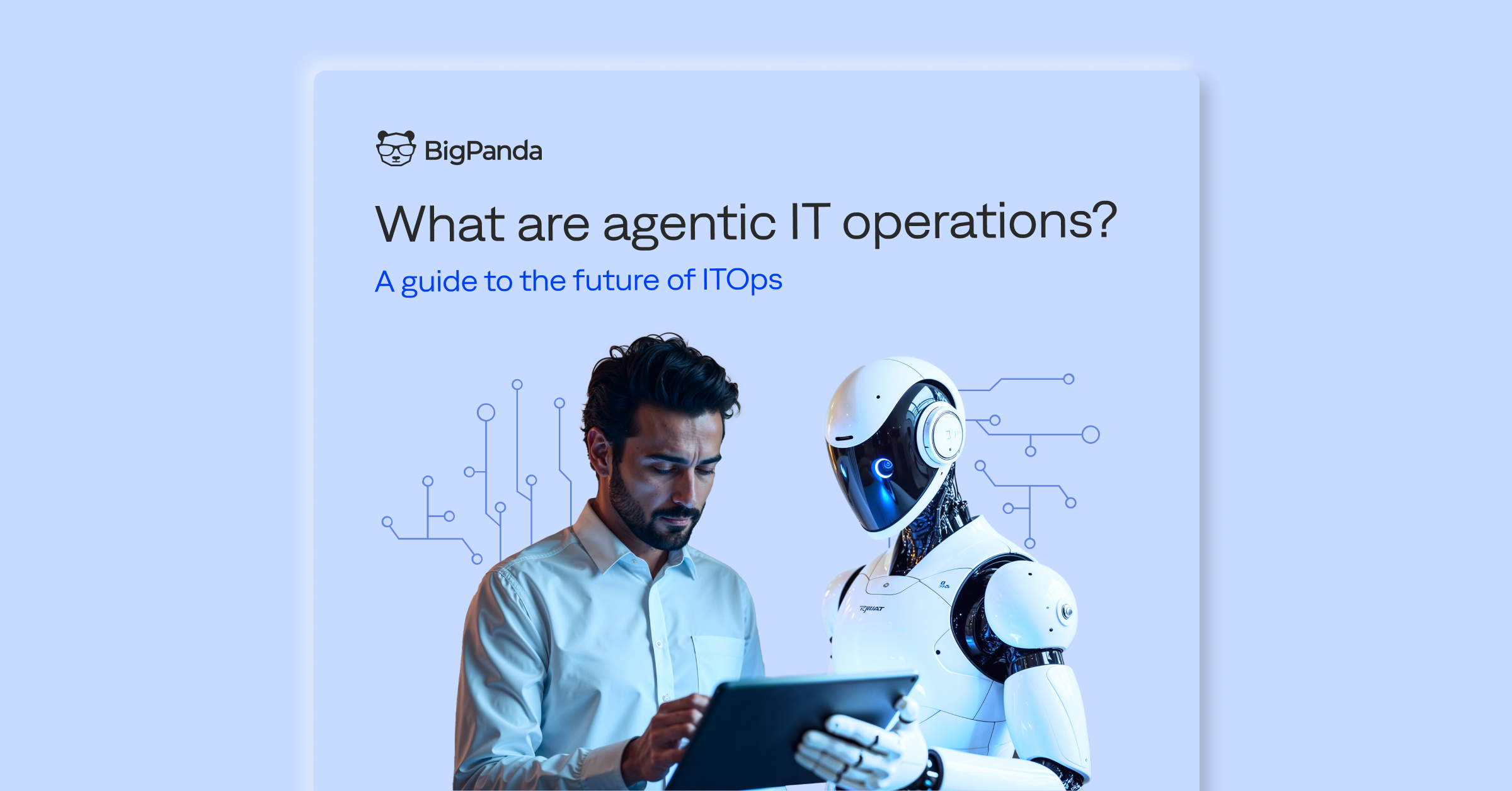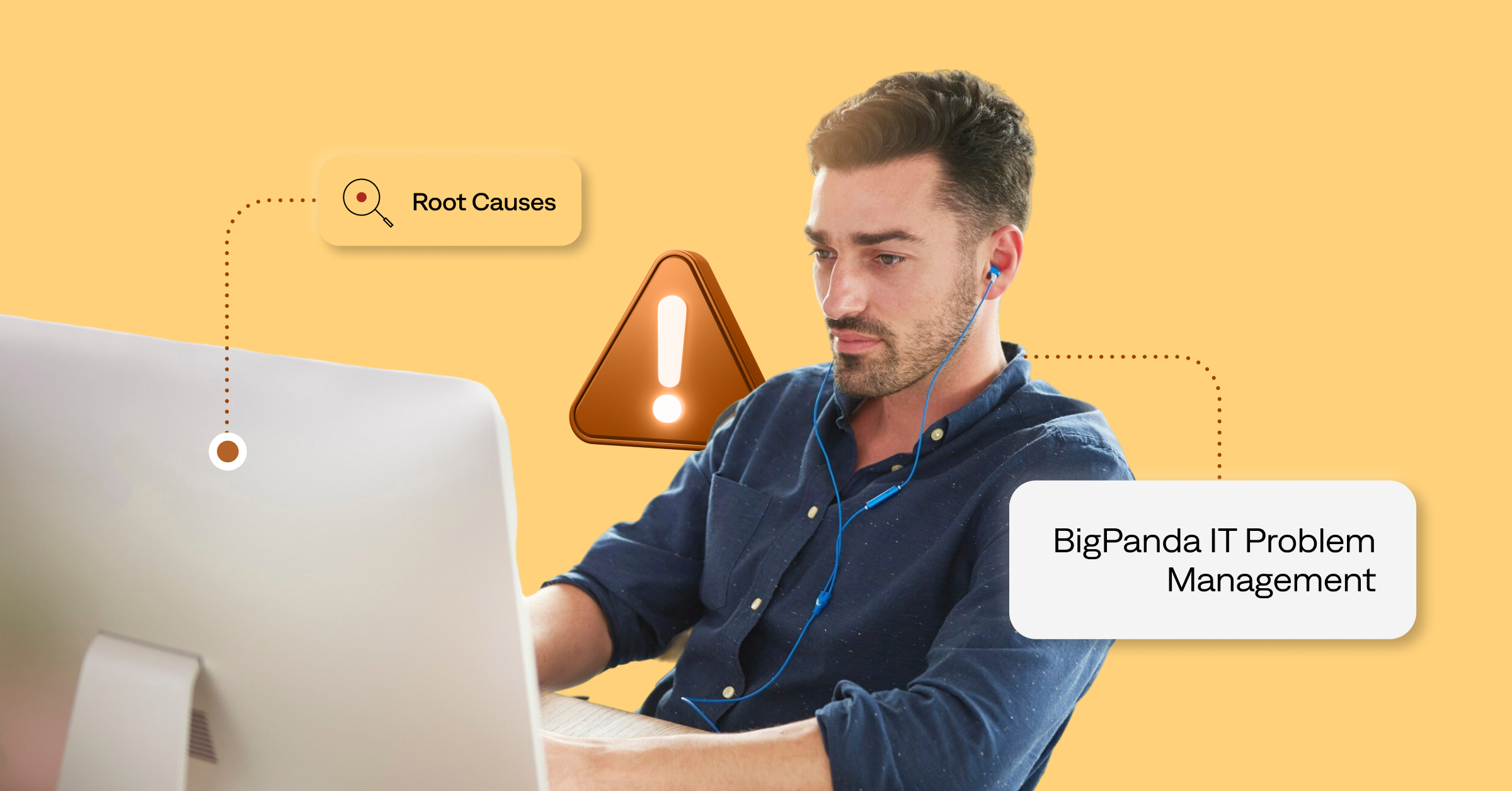1
Risks of alert noise
ITOps and AIOps teams often face an overwhelming volume of notifications, many of which are false positives or low-priority alerts. The constant influx creates a chaotic environment. ITOps and AIOps teams can easily miss critical issues, potentially leading to system failures or prolonged downtime. Spending significant time sifting through irrelevant alerts reduces team efficiency and slows response.
Focus on alert noise reduction to ensure that only meaningful and actionable alerts reach your teams. Filtering out non-essential alerts enables teams to maintain high vigilance and promptly resolve genuine issues. Your organization benefits from reduced downtime, a more resilient IT infrastructure, and happier customers.
2
Understanding alert noise
“Alert noise” refers to the high frequency of irrelevant notifications or false positives generated by IT monitoring systems. While intended to signal potential issues, these systems can become overwhelming and counterproductive when the alert volume is high and the relevance is low. Moreover, the noise can obscure critical alerts.
The most common sources of alert noise include:
- Misconfigured tools: Incorrect settings in monitoring systems can trigger alerts for non-critical events or generate multiple alerts for a single issue.
- Threshold sensitivity: Overly sensitive thresholds result in alerts for minor deviations that don’t impact system performance or security.
- Redundancy: Multiple tools monitoring the same infrastructure often generate duplicate alerts for the same issue.
- Transient issues: Temporary fluctuations in system performance that self-resolve can generate unnecessary alerts.
- Integration issues: Poorly integrated systems may hinder effective event correlation, leading to fragmented, redundant alerts.
3
Impact on IT teams and incident management
Unsurprisingly, alert noise affects IT operations and incident management processes. The constant barrage of redundant or irrelevant notifications can have profound consequences for team efficiency and system reliability:
- Increased response times: Difficulty differentiating between critical issues and non-critical notifications can delay prioritizing genuine problems. As a result, critical incidents may not get prompt responses, resulting in prolonged system outages and decreasing operational efficiency.
- Alert fatigue and burnout: Continuous exposure to alert noise can desensitize teams to notifications. Excessive noise creates a stressful and demotivating environment, significantly compromising your team’s ability to respond to genuine alerts effectively. Employee burnout reduces overall productivity and increases turnover rates — and costs.
- Missing critical alerts: Missing important notifications — the needle in the proverbial haystack of alerts — can jeopardize the stability and security of your IT systems. Missed critical alerts may lead to severe consequences such as data breaches, system failures, and financial losses.
4
Challenges of alert noise in IT incident management
Alert noise in IT incident management presents significant challenges, affecting the efficiency and effectiveness of operations. Knowing what these challenges are is the first step to improving incident response.
Overlapping alerts from multiple systems
Deploying multiple monitoring systems to capture different metrics often leads to overlapping alerts. These systems usually operate in isolation, leading to a fragmented view of incidents. Such fragmentation can trigger alert storms when a single event causes multiple alerts across siloed systems. The lack of system integration and correlation forces IT teams to manually piece together information to understand an incident’s scope and impact, delaying resolution.
False positives and irrelevant alerts
Repeated exposure to false alarms diminishes IT trust in alerting systems, which can cause teams to miss, ignore, or deprioritize genuine alerts. The cognitive load of constantly assessing and dismissing irrelevant alerts can also lead to decision fatigue, deteriorating the quality of incident response over time.
Lack of context
Missing context is particularly problematic because it forces IT teams to spend time investigating and troubleshooting alerts. Conversely, context-rich alerts facilitate quicker triage with precise alert correlation and responses. Without context, an alert indicates an issue exists but not what it is or why, so it’s not actionable. Effective incident management requires actionable information such as potential root causes, impacted systems, and suggested remediation steps.
Difficulty prioritizing
Prioritization is crucial in incident management, especially when resources are limited. However, alert noise can mask the signals that indicate critical issues requiring priority attention. The sheer volume and variety of alerts — ranging from minor performance deviations to major system failures — exacerbate the challenge.
Advanced prioritization requires sophisticated algorithms and machine learning models to analyze historical data, recognize patterns, and predict potential impacts. IT teams may struggle to allocate resources effectively without these tools, leading to delayed responses and inefficient handling of minor issues.
5
How to reduce alert noise
IT and cloud operations teams receive thousands of alerts daily, of which about 74% are noise. This can have a significant impact on team productivity and motivation. Luckily, you can adopt a multi-pronged approach to address the root causes of excessive and irrelevant notifications. Key steps include:
Step 1. Consolidate alerts from multiple sources
Collecting alerts from various monitoring tools into a unified platform is the first step in reducing alert noise. Integrate your monitoring systems into a single, cohesive platform to consolidate alerts. Use middleware or APIs to pull alerts from disparate systems for visibility in a centralized dashboard. By correlating the data, you can identify patterns and reduce redundancy to facilitate better historical analysis and future alert configurations.
Step 2. Filter and normalize
Use sophisticated rule engines to filter low-priority events and false positives and normalize alerts from different data sources. This effort — alert payload standardization — helps distinguish valuable alerts from noise.
Set dynamic thresholds based on ML algorithms that adapt to real-time conditions. Then, standardize alert formats from various sources for consistent processing. Make sure your filters are context-aware, adjusting their sensitivity based on factors such as time of day, current load, or historical performance. This helps reduce unnecessary alerts during peak times or scheduled maintenance.
Step 3. Dedupe and aggregate
Use deduplication to remove repeated alerts from the same event. Apply aggregation to combine related alerts into a single, comprehensive notification. These actions reduce the alert volume and help clarify the vital details, simplifying understanding of an incident’s scope and impact. Use graph databases to map relationships between alerts for a comprehensive view of incident impact.
Step 4. Enrich with context
Enriching IT alerts with context transforms raw notifications into actionable intelligence. In short:
- Attach metadata such as business criticality, historical incident data, and likely root causes based on ML models.
- Pull data from configuration management databases (CMDBs) and IT service management (ITSM) tools to provide a holistic view.
This helps you understand what happened and why while providing potential consequences. Advanced systems can suggest remediation steps based on previous incidents to accelerate response.
Step 5. Prioritize and classify severity
Organizing alerts based on severity ensures critical issues receive the attention they deserve, minimizing the risk of significant system failures. Develop a robust framework incorporating static rules and dynamic risk assessments for prioritization and classification. You can further enhance severity classification (high, medium, and low) with impact-analysis algorithms that evaluate an alert’s potential business impact. These algorithms consider factors like the number of affected users, system importance, and time to resolution.
You can then integrate business impact analysis (BIA) and Service Level Agreements (SLAs) to ensure the appropriate prioritization of critical alerts. Integrating user feedback mechanisms can also help refine prioritization rules over time.
Step 6. Automate and orchestrate
Use automation and orchestration to go beyond simple task execution. Create intelligent workflows that adapt as situations evolve. These technologies can automatically resolve minor issues, escalate critical alerts, and execute predefined remediation actions.
Integrate automation platforms with ITSM tools for seamless ticket creation, incident escalation, and remediation. Additionally, you can develop orchestration workflows that adjust dynamically based on the incident context to coordinate automated responses across multiple systems and processes. For instance, an orchestration engine might automatically route alerts to specific teams based on the time of day or nature of an incident.
You can use AI-driven automation to predict and prevent issues by analyzing trends and triggering preemptive actions before incidents escalate, reducing your team’s manual workload.
6
The importance of alert noise reduction
Effectively reducing alert noise can deliver significant benefits, chief among them:
- Faster incident response: Reducing alert noise leads to quicker identification of critical issues. Filtering out non-essential alerts allows IT teams to focus on real problems, significantly reducing response times. This prompt action minimizes downtime.
- More productive, focused teams: IT teams are more effective when not distracted by false positives and low-priority alerts. A streamlined alert system allows teams to concentrate on resolving significant issues and performing routine maintenance tasks.
- Fewer missed critical alerts: The most significant danger of excessive alert noise is the potential to miss critical notifications, leading to severe consequences such as system failures. Reducing alert noise ensures teams promptly notice and address critical alerts, protecting the IT environment and customer experiences.
7
Three best practices for effective alert noise reduction
Optimize your alert management systems for performance and reliability to reduce or eliminate irrelevant alerts.
- Establish clear alert management policies and processes. Start by developing well-defined policies and procedures for managing alerts. Define what constitutes a critical alert and establish protocols for handling different types of alerts, such as setting thresholds for alert triggers and determining escalation procedures. Clear policies ensure all team members understand their roles and responsibilities in incident management, leading to more consistent and effective responses.
- Continuously monitor and optimize alert rules. Alert management is not a set-it-and-forget-it task. You must constantly monitor your system’s performance and review the efficacy of alert rules. Analyze the frequency and relevance of alerts, adjust thresholds, and refine filters to reduce false positives at regular intervals. Incorporate feedback from incident post-mortems to identify opportunities for improvement. Continuous optimization allows you to adapt as your IT environment evolves and maintain efficient alert management.
- Foster collaboration between IT teams and stakeholders. Effective alert noise reduction requires cooperation between various IT teams and stakeholders. Encourage open communication and regular meetings to discuss alert management issues and share insights. Engage stakeholders from different departments to ensure that alert policies align with business objectives and operational needs.
8
Turn down the volume on event noise
BigPanda Alert Intelligence reduces event noise by filtering, normalizing, and enriching alerts, transforming millions of raw events into actionable, high-quality notifications. It suppresses non-actionable alerts and deduplicates recurring or cross-platform events by consolidating event data. This streamlined process helps ITOps, DevOps, and SRE teams focus on critical incidents, improving response times and operational efficiency.
BigPanda integrates seamlessly with many monitoring tools through REST API, email alerts, and SNMP traps. This self-service integration allows instant ingestion of events from thousands of IT systems and devices. Enriching alerts with contextual tags and critical details from CMDBs or service maps provides valuable insights into impacted services. This comprehensive approach enhances alert quality and impact assessment, reducing event noise.




